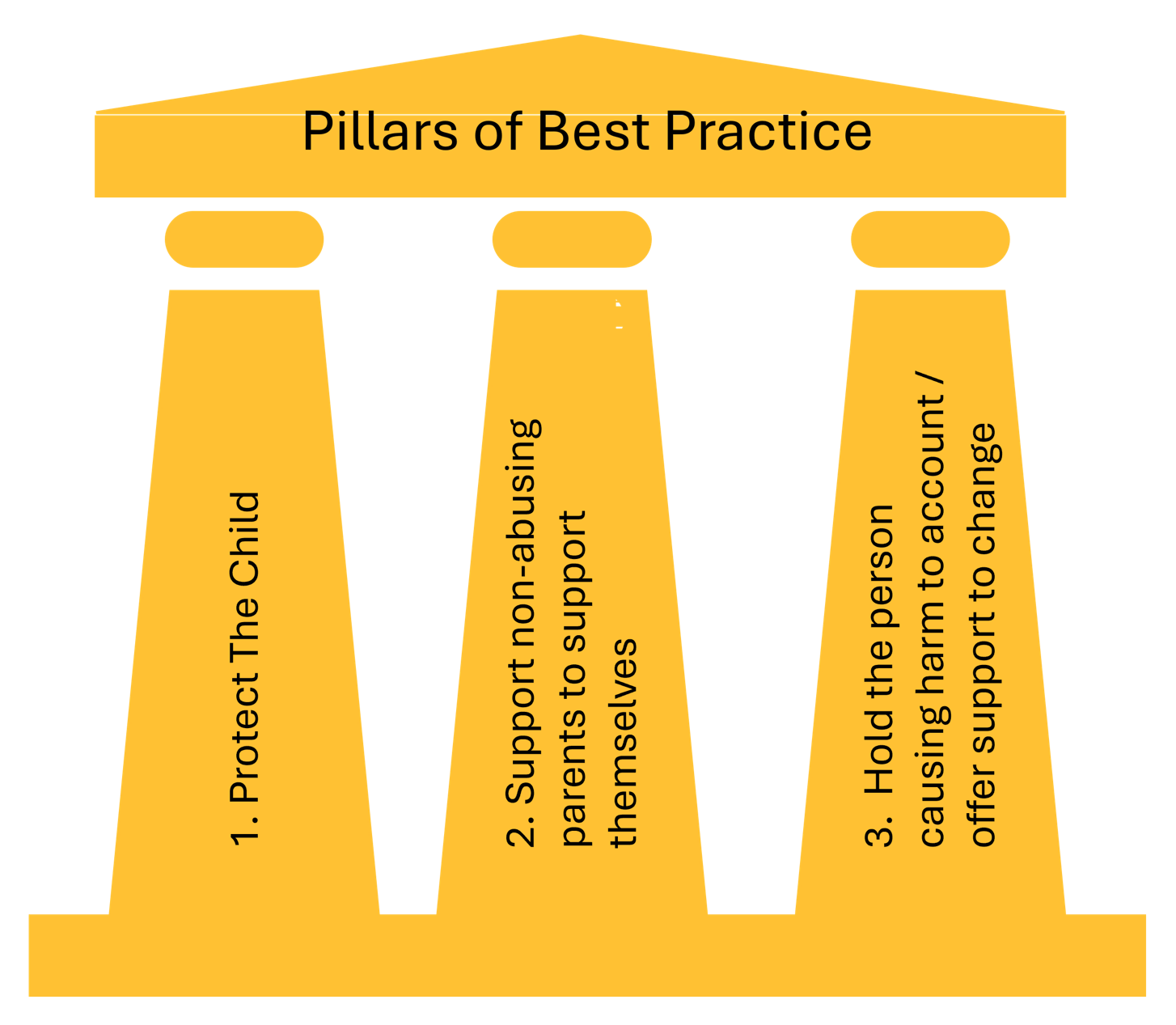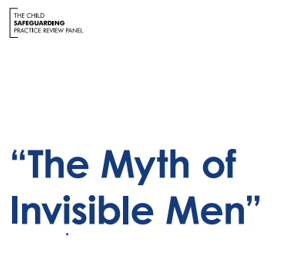This learning briefing follows a Rapid Review in relation to the death of a baby and where domestic abuse was a feature within the family.
February 2025
Our local Plymouth learning….
This review highlighted key areas of strength and development when responding to situations of domestic abuse. They focus around 6 key points:
1. Understanding the historical context
2. High risk moments
3. Working with those that cause harm
4. Professional curiosity & the power of language
5. Information sharing
6. Impact of managers
Let’s take a look at these points in more detail below……

UNDERSTANDING THE HISTORICAL CONTEXT
When working with families it’s important to consider what the historical context is telling us because this can help inform a view, as to whether or not, worrying patterns of behaviour remain a concern. For example, adults that cause harm can move from one relationship to another repeating a pattern of violence or coercion and control. There may be previous agency recommendations that adults do not have any contact with children because of domestic abuse worries.
Similarly, because of their vulnerability, adult victims of domestic abuse can be targeted by those with a history of causing harm and so victims can also experience a repeat pattern of being subject to abuse.
LEARNING INTO PRACTICE POINTS: Ask yourself the following questions:
1. Do I have any concerning information about an adult that others need to know to help support/safeguard children? Review your agency records to check if you do and share with relevant agencies where appropriate.
2. How is a parent’s/carer’s history influencing their care of children now? Chronologies can help you map patterns. We have a chronology template you could use as part of our Neglect Toolkit which you can access HERE.
3. How long has the family experienced a need for help and how long have worries existed for the child?
4. What’s changed in terms of the presenting situation?
3. What support has already been provided to the family and has it had a positive impact?
HIGH RISK MOMENTS
There are specific moments when domestic abuse can escalate. These include during and post separation and during pregnancy. Motivating this escalation is the fear felt by the person causing harm that they are losing control over their victim, therefore they increase the severity of the abuse in order to reassert their influence and power. These are significantly risky times for families.
LEARNING INTO PRACTICE POINTS: If you are supporting a family in these increased high risk moments seek safeguarding guidance from your supervisor/manager as risk needs to be re-assesed and support carefully thought through to take account of the potential for escalation. Share with your supervisor that you’re aware these moments can be high risk and support for the family needs to be reviewed.
If you are a supervisor and you’re seeing or hearing that a family is in a high risk moment then, as already mentioned, the support and plan for the family will need to be reviewed, including considering referral to enhanced, specialist or safeguarding services.
WORKING WITH THOSE THAT CAUSE HARM
In our response to domestic abuse the safety and support of child and adult victims is a priority. We also need to consider what focus and support is being given to the person that causes harm so they can be held accountable for their behaviour and be helped to change. If we don’t do this then it increases the likelihood of harm continuing and moving into future abusive relationships.
LEARNING INTO PRACTICE POINTS:

Always take a whole family approach which means placing emphasis on protecting the child, engaging and supporting the non-abusive parent and holding the person causing harm to account. This is known as the 3 Pillars of Best Practice. You can learn more about this HERE as part of our Domestic Abuse Practice Guidance.

The Myth of Invisible Men is also a very useful analysis of how we can make sure males are more visible in our work and that services are male inclusive.
You can read The Myth of Invisible Men HERE.
PROFESSIONAL CURIOSITY & THE POWER OF LANGUAGE
The language we use with each other and with families can support us to understand and see vulnerability or it can have the opposite effect where it can lead us to not see risk and be less curious in our conversations. For example, in situations of domestic abuse, we might label a victim as presenting with ‘disguised compliance,’ ‘refusing to engage’ when in reality their behaviour is an indicator of the coercion and control they are under. Similarly we might be falsely reassured when an adult victim tells us they are not in a relationship with someone but in reality they are still ‘seeing’ them and having on-going contact with them. They are not misleading you, you might just not be asking the right curious questions.
LEARNING INTO PRACTICE POINTS: In your conversations with victims of domestic abuse always think about how their behaviour is being influenced by the control and coercion they are being subject to. This will help you stay focused on their, and their children’s vulnerability, as victims of domestic abuse. Move your conversations away from being ‘transactional’ i.e. you ask a question, they answer, you move on, and be more ‘transformational.’
Being ‘transformational’ is about asking that second question based on the reply. It’s about analysing and triangulating the information received and then considering what that all means for the children and families involved. For example if someone tells you they’re not in a relationship with someone you could respond by saying ‘Can I just ask what you mean by ‘not in a relationship? Do you or the children still see them? etc…..
We have written a guide to professional curiosity which you can find HERE.
INFORMATION SHARING
Information sharing is an essential ingredient for effective safeguarding but it is also a complicating factor in our work with children and families with the Child Safeguarding Practice Review Panel (2024) describing information sharing as a ‘perennial issue’ in child protection. In this particular Plymouth rapid review there was confusion over whether consent was needed to share significant concerns and agencies were wrongly advised that consent was needed. There was an example of very good practice in this review with professionals sharing their concerns against the advice received based on their assessment of the situation.
When sharing information Strategy Meetings are a key moment in safeguarding procedures for professionals to come together and build a picture of what life is like for a child. It’s important that all relevent agencies are invited so that everyone can understand the situation and be part of the support moving forward where appropriate.
This rapid review also highlighted the importance of being clear when organisations are asking others ‘to monitor’ a situation.
LEARNING INTO PRACTICE POINTS: The Department for Education Information Sharing Advice for Practitioners 2024 sets out 7 Golden Rules for information sharing. Rule 3 states: ‘You do not need consent to share personal information about a child and/or
members of their family if a child is at risk or there is a perceived risk of harm.’ Please take a look at this guide which is included in our Information Sharing briefing that you can find HERE.
If you are responsible for Strategy Meetings consider inviting all agencies that are relevent to the child’s life and that have a role to play in helping to safeguard them.
When your service is not offerring/able to provide help to a family avoid using the phrase, ‘Health (as an example) to monitor.’ Think about what this means in reality. Does that agency have the role and level of engagement to be able to monitor a given situation? What does monitor mean? Does that agency know and understand that this is being requested of them?
IMPACT OF MANAGERS
Working with children and families can be complex and impactful for professionals. Lots of things can get in the way of us truly understanding what life is like for a child. The impact of managers is therefore crucial to help front line workers think about the work taking place with a family and that the right level of support is being provided given the complexity of needs. This Rapid Review highlighted how the family could have benefited from more specialist teams alongside managers needing a greater understanding of coercive and controlling behaviour.
LEARNING INTO PRACTICE POINTS: If you are a manager or supervisor create a time/space for the people you support to talk about the families they are working with and reflect/review the help being provided. Consider if the level of help is right for the family or does it need more specialist support.
Our domestic abuse practice guidance and toolkit also includes content on understanding coercive and controlling behaviour. In response to this Rapid Review we are in the process of developing a range of webinars to support knowledge and skills in responding to domestic abuse. Please regularly check our website front page news posts and the Course Bookings and Information page which is where we will share all the details.

